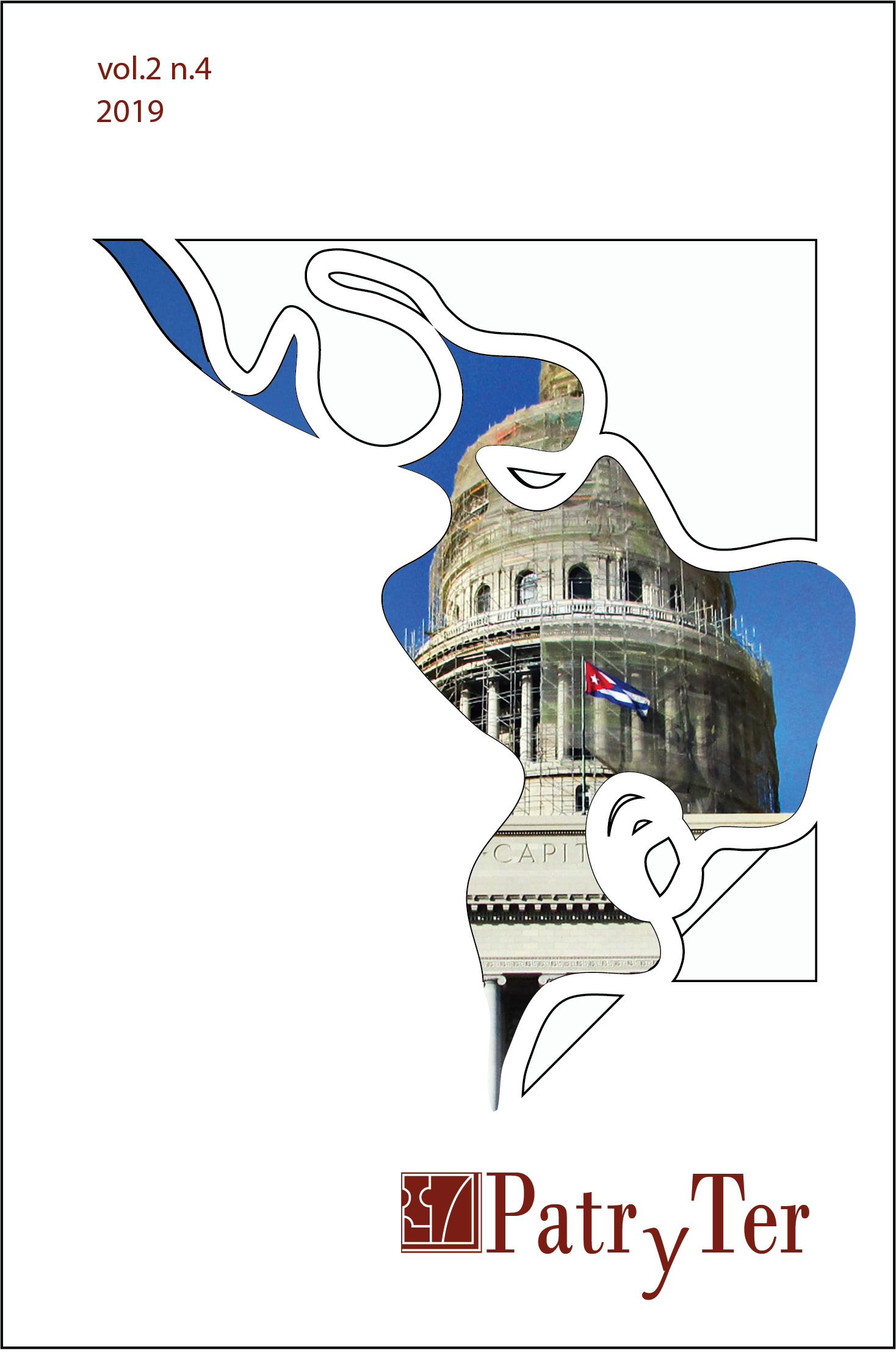Socio-spatial dynamics of the La Habana after 1990
DOI:
https://doi.org/10.26512/patryter.v2i4.23290Keywords:
socio-spatial dynamics. urban form. social re-composition. built ur area. social groups.Abstract
This article is presented as a recap of a series of notes and reflections published by the author in a previous issue of the magazine PatryTer, linked to the theme of socio-spatial differentiation in urban areas, specifically, the case of Havana, Cuba and the peculiarities that have been developed in terms of the impact of the peculiarities of the model of spatial assimilation, a situation that remained, at least from the theoretical point of view, intact or unmovable until the 1990s, when the country suffered a deep and enduring economic crisis in which the government enacted economic measures in order to overcome the crisis and tackle it, constituting a great challenge for the country, and therefore for the capital, given that, although undesired, there is inevitably a process of accentuation and re-conditioning of its socio-spatial differentiation. Added to these strategies are those linked to the Update of the Cuban Economic Model approved by the VI Congress of the Communist Party of Cuba, as well as the changes to national legislation that have reaffirmed and marked new trends in the process of renewal and creation of the social-urban area from 2011.
Downloads
References
Coyula, M. (1996). "La Habana Siempre, siempre mi Habana". Archivos de Arquitectura Antillana, 1 (2), 77-83.
Coyula, M. y Hamberg, J. (2004) “Understanding slums: The case of Havana, Cuba”. The David Rockefeller Center for Latin American Studies. Working papers on Latin American, No 04/05-4. Harvard University.
Dirección Provincial de Planificación Física (DPPF, 2011). Barrios y focos precarios de la provincia “La Habana”. La Habana: DPPF.
Ferriol, A. M (1998). Política social cubana; situación y transformaciones. en: Temas. 11
García, C. (2014). La Habana, ¿una ecuación imposible? En: Catalejo, El Blog de Temas. Recuperado el 21 de octubre de 2014 de: http://www.temas.cult.cu/catalejo/
González, R. (1999). “Apuntes para un Estudio Socio Ambiental de Los Barrios y Focos Insalubres en La Ciudad de La Habana”. En: William Ortíz (comp.), Estudios Urbanos. Cuba 1998. Medellín: Editorial Universidad Pontificia Bolivariana, p. 67-79.
___________ (2001). “Diferenciación socio ambiental en el barrio Romerillo, ciudad de La Habana. Potencialidades para la gestión comunitaria”. GEOTERRA DIDACTICA, 1 (1), 41-49.
___________ (2007). “La Habana, apuntes para un estudio socio espacial”. En Maribel Villalona y otros “Ciudades fragmentadas: Las fronteras internas en el Caribe”. Santo Domingo: Grupo de Estudios multidisciplinarios Ciudades y Fronteras, 129-151
Instituto Nacional de la Vivienda (INV, 2013). Estrategia para el desarrollo habitacional de La Habana “2011 - 2030”. La Habana: INV
Instituto de Planificación Física (IPF, 2013). Plan General de Ordenamiento territorial y urbanismo. La Habana: IPF.
Iñiguez, L. (2004). “Desigualdades espaciales en Cuba: Entre herencias y emergencias” En: Iñiguez, Luisa y Omar Everleny (comp.) Heterogeneidad social en la Cuba actual. La Habana: Universidad de La Habana, p. 31-54.
Martínez, F. (1991). Cuba en los noventa. Realidades, proyectos, alternativas. La Habana: Editorial Ciencias Sociales
Oficina Nacional de Estadísticas e Información (ONEI, 2013). Censo de Población y Viviendas 2012, Resultados definitivos, La Habana: ONEI.
Partido Comunista de Cuba (PCC, 2011). Resolución sobre los lineamientos de la Política Económica y Social del Partido y la Revolución. La Habana: PCC.
Partido Comunista de Cuba (PCC, 2017).Conceptualización del modelo económico y social cubano de desarrollo socialista. La Habana: PCC.
Partido Comunista de Cuba (PCC, 2017a). Plan nacional de desarrollo económico y social hasta 2030: propuesta de visión de la nación, ejes y sectores estratégicos. La Habana: PCC.
Rego, R. G. (2018). La Habana, dinámica socio espacial de las formas urbanas. PatryTer, (1), 1, pp. 1-12.
Downloads
Published
How to Cite
Issue
Section
License
Copyright (c) 2019 PatryTer

This work is licensed under a Creative Commons Attribution 4.0 International License.
Please be advised that Revista Patryter is licensed under a Creative Commons Attribution-NonCommercial-NoDerivatives 4.0 International License (CC BY 4.0) https://creativecommons.org/licenses/by/4.0/
Authors who publish in the PatryTer Magazine agree to the following terms:
- Authors retain the copyright and grant the journal the right of first publication, the work being simultaneously licensed under the Creative Commons Attribution License (CC BY) which allows the sharing of the work with recognition of the authorship of the work and initial publication in this journal.
- The contribution is original and unpublished and is not being evaluated for publication by another journal. When submitting the article, authors should attach as a supplementary document a Letter addressed to the PatryTer's Editor, indicating the academic merits of the submitted work (relevance, originality and origin of the article, that is, from what type of research]. This letter must be signed by all authors.
- Authors assign the copyright of the work that they present to the Editorial Board of PatryTer Magazine, which may serve the article in the PatryTer Magazine and in public and private databases in Brazil and abroad.
- Authors declare that they are fully responsible for the entire contents of the contribution that they submit to the Editorial Board of PatryTer Magazine.
- Authors declare that there is no conflict of interest that could interfere in the impartiality of the scientific papers submitted to the PatryTer Magazine Editorial Board.
- Authors are authorized to take additional contracts separately, for non-exclusive distribution of the version of the work published in this journal (eg publish in institutional repository or as a book chapter), with acknowledgment of authorship and initial publication in this journal.
Authors are allowed and encouraged to publish and distribute their work online (eg in institutional repositories or on their personal page) at any point before or during the editorial process, as this can generate productive changes as well as increase the impact and the citation of the published work (See The Effect of Free Access).




